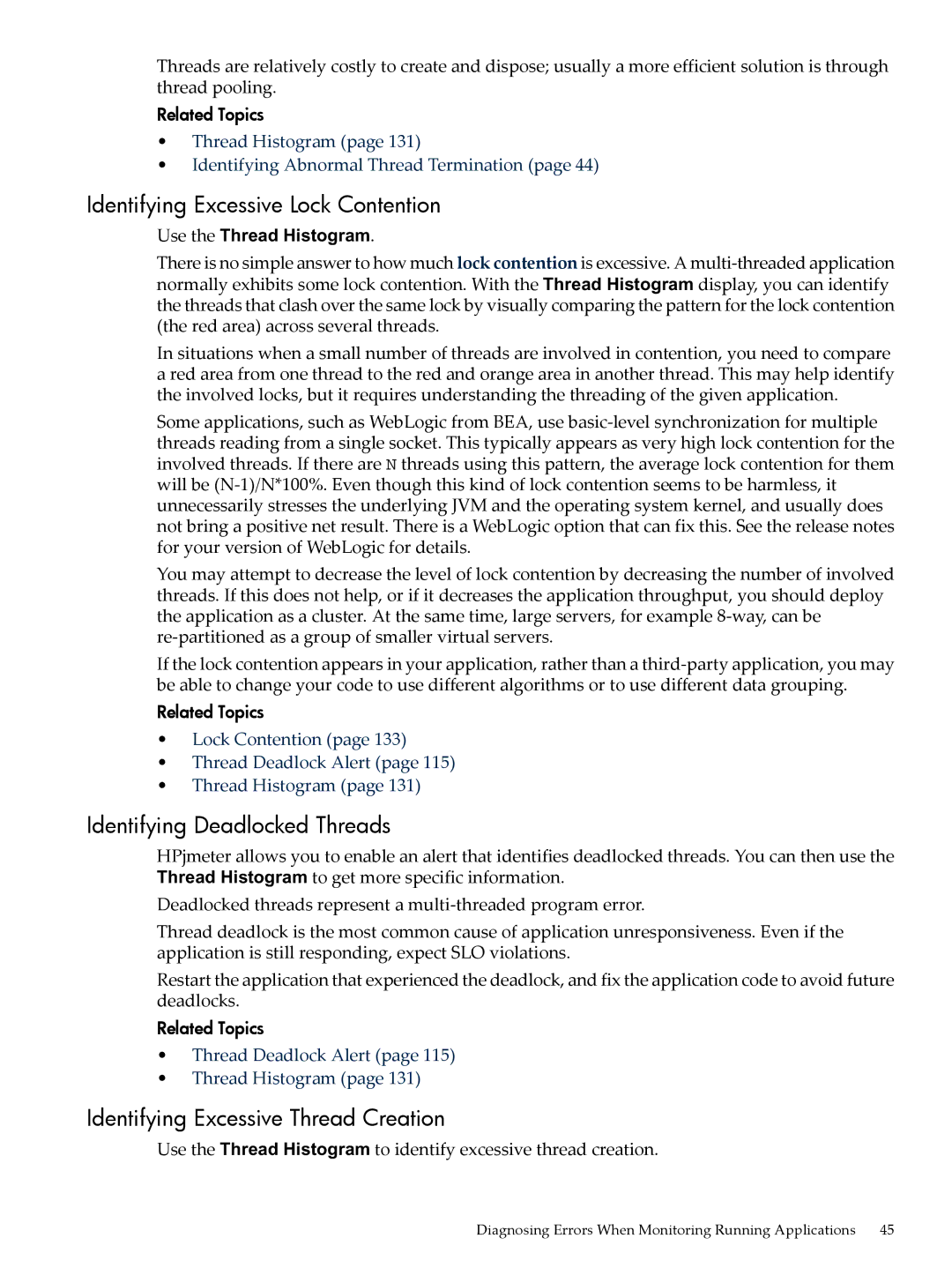Threads are relatively costly to create and dispose; usually a more efficient solution is through thread pooling.
Related Topics
•Thread Histogram (page 131)
•Identifying Abnormal Thread Termination (page 44)
Identifying Excessive Lock Contention
Use the Thread Histogram.
There is no simple answer to how much lock contention is excessive. A
In situations when a small number of threads are involved in contention, you need to compare a red area from one thread to the red and orange area in another thread. This may help identify the involved locks, but it requires understanding the threading of the given application.
Some applications, such as WebLogic from BEA, use
You may attempt to decrease the level of lock contention by decreasing the number of involved threads. If this does not help, or if it decreases the application throughput, you should deploy the application as a cluster. At the same time, large servers, for example
If the lock contention appears in your application, rather than a
Related Topics
•Lock Contention (page 133)
•Thread Deadlock Alert (page 115)
•Thread Histogram (page 131)
Identifying Deadlocked Threads
HPjmeter allows you to enable an alert that identifies deadlocked threads. You can then use the Thread Histogram to get more specific information.
Deadlocked threads represent a
Thread deadlock is the most common cause of application unresponsiveness. Even if the application is still responding, expect SLO violations.
Restart the application that experienced the deadlock, and fix the application code to avoid future deadlocks.
Related Topics
•Thread Deadlock Alert (page 115)
•Thread Histogram (page 131)
Identifying Excessive Thread Creation
Use the Thread Histogram to identify excessive thread creation.
Diagnosing Errors When Monitoring Running Applications | 45 |
